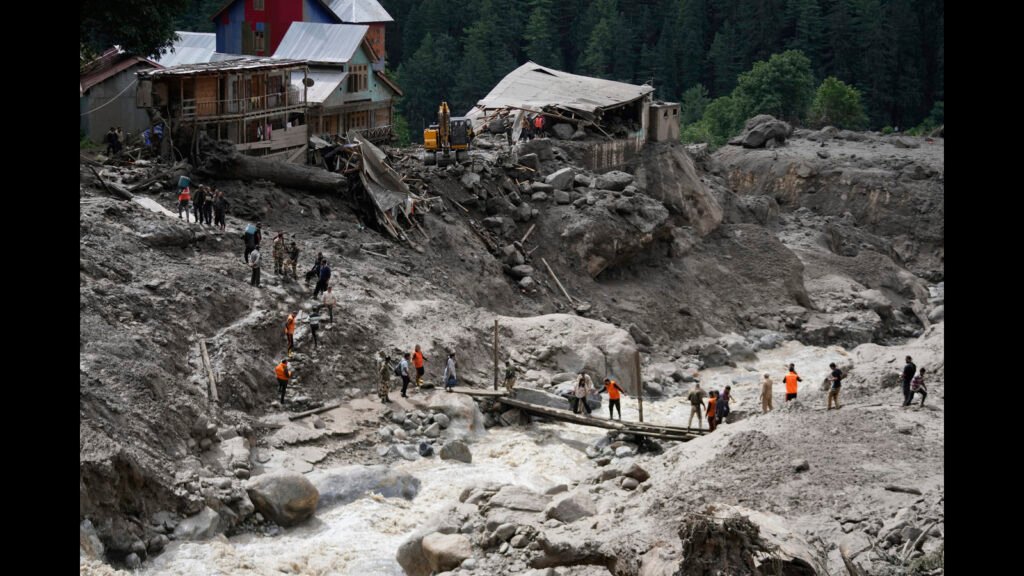
Blue skies turning to grim gray is an indication of the change of season. From a period of fresh air to deadly smog. This year, the southwest monsoon withdrew from the Indian landmass on October 16, and the northeast monsoon arrived on the same day, ahead of its normal schedule on the eastern coast. An early onset and prolonged monsoon season scored an extra eight per cent of average rainfall with 937.2 mm of recorded rainfall from above the normal average of 868 mm.

But what did we do with this extra 8% of surplus fresh water from the skies? For a severely water-stressed country (we are 18% global population with 4% fresh water resources), how much water did we conserve? After all, rainwater is a critical natural resource, and the monsoon remains the backbone of India’s economy and food security.
At the very end of September, just when the southwest monsoon started to retreat from Northwest India, the Union rural development ministry’s National Initiative on Water Security drew scant attention in the news cycle. Now, a fixed portion of the Mahatma Gandhi National Rural Employment Guarantee Act (MGNREGA) funds has to be earmarked for rainwater conservation. The expenditure on rainwater harvesting has to increase based on groundwater stress levels: 65% for “dark zone” districts, 40% for “semi-critical” districts and 30% for other districts.
The specter of a severe water crisis hangs over us, endangering social, economic and environmental stability. Even after an “over-and-above” monsoon, we remain a water-stressed country. East and northeast India recorded a rain deficit of over 20% with four northeastern states at a 40% deficit. Meghalaya, the rain capital of the country, recorded a deficit of 45%. A reminder that rain doesn’t fall in equal measure. And, although we had successive years of good (average) rains, there will be periods of below-average rainfall too.
This is despite the national focus on rainwater harvesting through the ministry of Jal Shakti’s annual “Catch The Rain” campaign. However, this push for new rainwater harvesting structures is undercut by a major, unseen problem with existing large-scale storage. The result is a crisis unfolding within India’s major water reserves. While recent data shows over 60% of major reservoirs are near-full (above 90% capacity as of mid-October), a September 2025 report from the Indian Institute of Science Education and Research (IISER, Bhopal) provides a crucial counterpoint. It states that massive sedimentation has already wiped out 50% of the original storage capacity in all big dams and reservoirs nationwide. The reported high water level figures, therefore, mask a significant reduction in true water security.
The monsoon rains have been tempestuous. A record 765 very heavy to extremely heavy rainfall events have lashed the mountain states. For Karnataka and Maharashtra, the Center has announced 2,000 crore as flood relief. And this doesn’t end here.
The downpour has been so relentless that the very people who were begging for an end to the brutal summer heat were complaining about the intense deluge. Rain has gone from boon to bane. Cities, small and large, have been pounded relentlessly. Lives have been lost in flash floods, and infrastructure badly damaged in landslides. From the plains to the hills, short, intense spells of rain have battered every corner of the country. Residents of Jammu, Dehradun, Mumbai, Kolkata, Ajmer, Rajkot and Gurugram have gone through very tough days. And the full extent of the damage from rain and subsequent devastation in Punjab and Himachal Pradesh has yet to be properly assessed.
The rapid expansion and urbanization of Indian “smart” cities have exacerbated persistent water woes, leading to both flooding and shortages. A key driver of this crisis is the disregard for natural drainage systems. By paving over land and failing to incorporate our age-old knowledge of water conservation, we have eliminated pathways for rainwater. Consequently, water follows the path of least resistance, resulting in severe and immediate waterlogging, often after just a few hours of heavy rain.
The intense rain is not just a problem; it’s a self-fueling engine of destruction for land. Intense rainfall drives severe soil loss, a challenge often overshadowed by flooding. A devastating double-edged outcome where extreme downpours can erode as much as 30 tonnes of soil per hectare daily, degrading precious cropland and making the bare earth tragically susceptible to the next deluge.
As the primary driver of erosion, water acts as an earth mover by separating soil particles and transporting them into streams, gullies and rivers. This contact happens via rainfall, irrigation systems and flooding. Individual raindrops may seem gentle, but the collective power of rain on the earth is shattering.
The story of India’s soil is a slow-burning national crisis. It is now a critical, two-fold challenge. The soil itself is dying, and its health crisis is polluting the nation’s most precious fresh water source. The chemicals and eroded topsoil, rich with excess fertilisers and pesticides, are washed away by rain. The toxic run-off contaminates rivers, lakes and groundwater. About 58% of the country’s annual rechargeable groundwater is contributed by monsoon rainfall.
This interconnected degradation of both land and water creates an existential threat. India’s historic ability to remain food self-sufficient is now being challenged by water issues and degraded soil, turning a slow, ecological decline into a national emergency. Public memory is short, and, in an era of climate crisis, monsoons will return with further intensity.
Ananda Banerjee is an author, artist, and wildlife conservationist. The views expressed are personal




